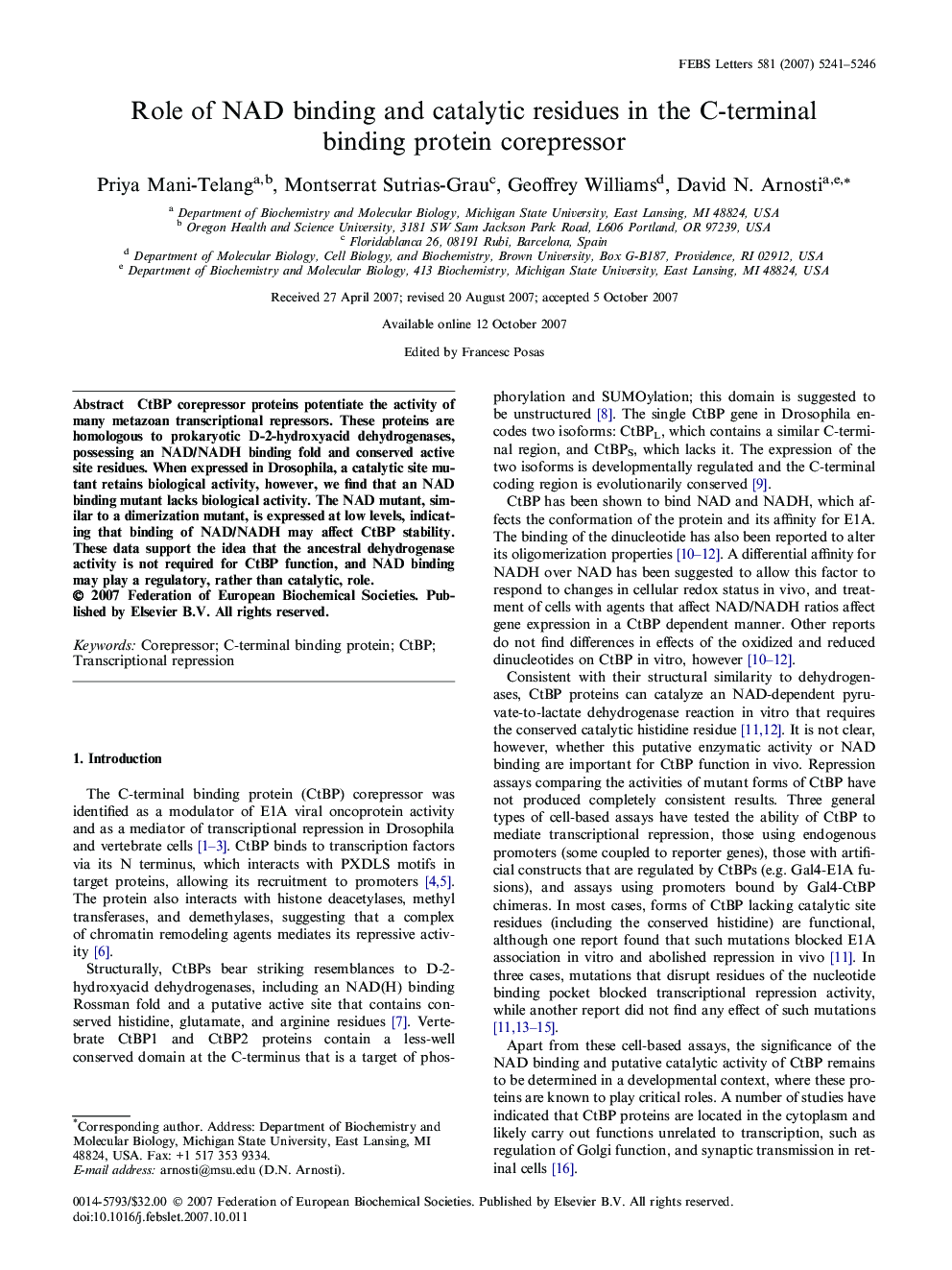| Article ID | Journal | Published Year | Pages | File Type |
|---|---|---|---|---|
| 2051383 | FEBS Letters | 2007 | 6 Pages |
Abstract
CtBP corepressor proteins potentiate the activity of many metazoan transcriptional repressors. These proteins are homologous to prokaryotic D-2-hydroxyacid dehydrogenases, possessing an NAD/NADH binding fold and conserved active site residues. When expressed in Drosophila, a catalytic site mutant retains biological activity, however, we find that an NAD binding mutant lacks biological activity. The NAD mutant, similar to a dimerization mutant, is expressed at low levels, indicating that binding of NAD/NADH may affect CtBP stability. These data support the idea that the ancestral dehydrogenase activity is not required for CtBP function, and NAD binding may play a regulatory, rather than catalytic, role.
Related Topics
Life Sciences
Agricultural and Biological Sciences
Plant Science
Authors
Priya Mani-Telang, Montserrat Sutrias-Grau, Geoffrey Williams, David N. Arnosti,
